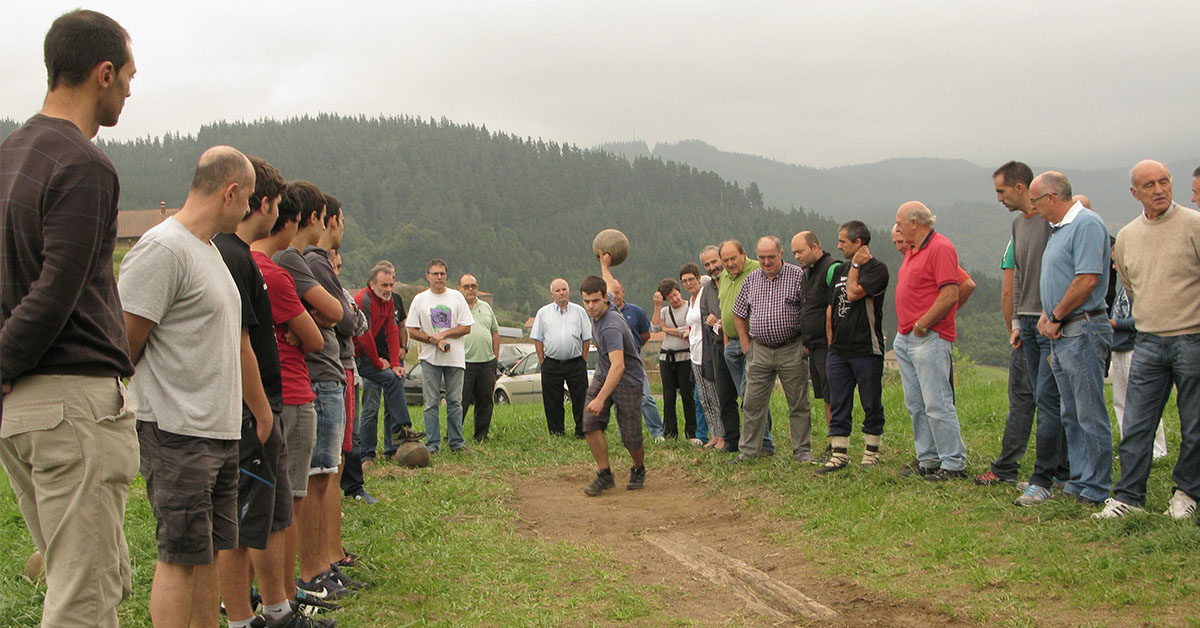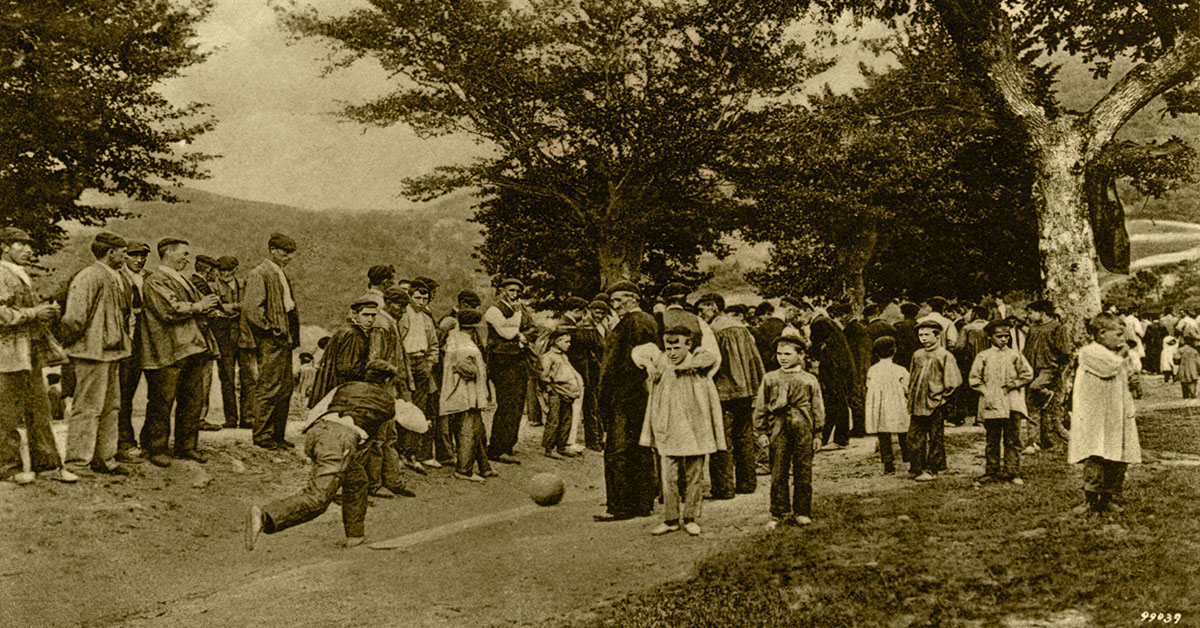Basque ethnography at a glance

Zeanuri brotherhood skittle championship at Altzusta bowling alley (1-X-2022). Photo credit: Jon Urutxurtu.
The game of skittles is at risk of disappearing. The gradual loss of the game of skittles and the decline of the rural world happened at around the same time in the mid-20th century, and was mainly due to the population exodus from the countryside to industrial cities.
If it is now a minority sport, it was nearly as popular as Basque pelota in the past. Hundreds of skittle alleys — bolalekuak or bolatokiak — have been lost and, above all, the culture of the game is no longer passed down from generation to generation.
There are many versions of skittles in Euskal Herria and in other areas of the Spanish state. Fifteen different versions, some of which have already disappeared, can be found in the province of Bizkaia alone. One of them is the Zeanuri version. The skittle alleys that still exist are alongside some of the chapels of the town’s seven districts or brotherhoods; the game is played there once a year, on the feast day of the chapel.
The Zeanuri skittle alleys are between 19 and 29 metres long and between 2.50 and 3.50 metres wide. Players have to hit a board in the bowling area with the ball; if it does not hit the wood or does so over the line of the board, it is sinka, and the bowl is not valid. There is a small peg — katxine — roughly halfway up the alley on the left and if the bowl touches the peg, it is not valid.
At the end of the alley, there are four skittles or pins — txirloak —, three of the same size — around 40 cm — and another smaller one — around 20 cm—, to the left of the three larger ones, known as kingpins. The log called zubile is behind the skittles and marks the rear or end of the alley. If the ball does not touch the rear, the bowl will not be valid and that is known as txorra. A person, usually a boy — etxerue — stands at the rear and is in charge of returning the balls to the bowler — bolari — and standing the pins up. The winner usually gives the boy a tip at the end of the competition.
The game consists of knocking down the skittles and each one is worth a point. If the ball knocks down the small pin on the left, no point is scored. That pin has to be knocked down by one of the three kingpins.
The bolaris have to pay a small sum of money — one or two euros —, known as arrapea (prize pot), before they start playing. Once they have paid, they can throw three balls. The prize pot is the money from all the participants.
Apart from playing for the arrapea, a local singles championship is played at five skittle alleys: in Altzuaga, in Undurraga, in Ipiñaburu, in San Justo and in San Lorenzo. The top qualifiers play the singles final at the San Lorenzo skittle alley on the day following the feast day.
The season ends at the San Miguel de Altzusta skittle alley, where a competition is played with teams of four bolaris, in which the town’s seven brotherhoods take part.
Jon Urutxurtu


